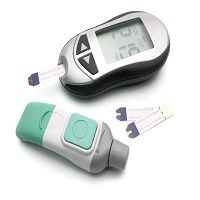Closed-Loop Glucose Controller Safe, Effective for Adults with Type 1 Diabetes
The system maintains tight glucose control and reduces the risk of hypoglycemia.

Findings of a recent study demonstrate a multivariable closed-loop glucose controller with automatic carbohydrate recommendation is effective and safe during and after unannounced and announced exercise in patients with type 1 diabetes.
The system maintained glucose within the target range and reduced the risk of hypoglycemia.
Clara Viñals, MD, and colleagues from Spain and Brazil aimed to evaluate the system during and after exercise in adults with the condition. In the open-label, randomized, three-arm, crossover, in-hospital clinical trial, the investigators included patients aged 18-65 years old with a clinical diagnosis of type 1 diabetes for at least 1 year, HbA1C between 6-8.5% and on an insulin pump for at least 6 months. The patients had a BMI within 18-30 kg/m2 and without advanced chronic micro- and macrovascular complications.
Patients wore a continuous glucose monitor device for 6 days before their exercise test. Data from the device were used to optimize insulin to carbohydrates ratio, sensitivity factor, and basal insulin needs. The investigators randomly assigned each patient 1:1:1 to perform physical exercise on 3 different sequences: multivariable closed-loop with unannounced exercise, multivariable closed-loop with announced exercise, and open-loop with announced exercise.
During a screening visit, patients had a detailed physical examination, an HbA1C measurement, an EKG, and a safety clinical laboratory analysis if they met inclusion criteria. For 3 separate in-hospital visits, participants arrived at the site after having a standardized breakfast of 50 g of carbohydrates at home.
Exercise started and consisted of 3 15-minute sets on a cycle ergometer at 70% of maximum heart rate with 5 minutes of rest between sets. Patients wore a heart rate monitor. The exercise announcement happened 20 minutes before the start of the activity.
The closed-loop glucose controller system was built in an Android platform and different artificial pancreas architecture could be used. The system was installed in a smartphone that could be wirelessly connected to the insulin pump and continuous glucose monitor using Bluetooth. The technology retrieved glucose and insulin data from the pump and continuous glucose monitor and set insulin treatment based on the selected therapy of open-loop or closed-loop. The closed-loop system received glucose measurements from 1 continuous glucose monitor every 5 minutes and calculated insulin delivery and a fast-acting carbohydrate intake recommendation.
The primary endpoints were the percentage of time less than 70 mg/dl of sensor glucose and the number of hypoglycemic events during exercise and recovery. Additional endpoints included the percentage of time spent in 70-180 mg/dl and greater than 180 mg/dl during exercise and recovery, coefficient of variation of continuous glucose monitoring values during and after exercise, and total insulin and carbohydrates during and after exercise and on the exercise announcement event.
During the exercises, data from the continuous glucose monitor were available 93.33% of the time. In total, 15 hypoglycemic events were recorded—4 for the closed-loop unannounced arm, 3 for the closed-loop announced arm, and 8 for the open-loop arm. Using the multivariable closed-loop glucose controller with automatic carbohydrate recommendation in both closed-loop arms decreased the time less than 70 mg/dl of sensor glucose (0% [0-16.8]) and (0% [0-19.2]) versus 16.2% (0-26) for closed-loop unannounced, closed-loop announced, and open-loop, respectively (P=.047, P=.063). the closed-loop system also decreased the number of hypoglycemic events compared to open-loop (closed-loop unannounced, 4; closed-loop announced, 3 vs open-loop, 8; P=.218, P=.25).
Using the closed-loop system increased the proportion of time within 70-180 mg/dl (87.8%, [51.1-100] and 91.9%, [58.7- 100] vs 81.1%, [65.4-87.]; closed-loop unannounced and announced versus open-loop, respectively; P=.227, P=.039).
Overall, the system maintained tight glucose control reducing the risk of hypoglycemia despite less amount of carbohydrate intake. The closed-loop unannounced and announced exercise control systems performed well and were safe during and after exercise in adults with type 1 diabetes performing heavy aerobic exercise.
Longer-term outpatient studies are needed to further assess the efficacy and safety of the system in free-living conditions in a larger group of patients.
The study, “Artificial pancreas with carbohydrate suggestion performance for unannounced and announced exercise in Type 1 Diabetes,” was published online in The Journal of Clinical Endocrinology & Metabolism.